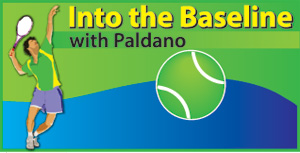Elite Players and their emotions
View(s):In a match, surging emotion and the subsequent bad performance due to it, is an unwanted development in any Tennis player. Although it is common, the cause of a player’s emotional reaction is not fully understood, even among professional players. Apart from unkindly labelling the player, not much has been of help to them.
If an emotional incident develops in a match and, if she/he is in the top 20 of the ranking, the incident will hang over them till the end of their career. If the professionals overplay towards the end of the season, they are vulnerable to surging emotions which could disturb them irrecoverably.
Overplay
Why emotions? In general, it is the least forgiven aspect in a Tennis player’s competitive span of life. Sloane Stephens, at last, has pronounced it on behalf of all the players. If the amount of competition Tennis is not regulated, it will stress the player. Then emotional stress is inevitable. She put it in another way, she emphasised on overplay. What she meant was, her emotions did not support her to play well, if she has overplayed. This holds true for every player. It is easy to notice it in the professional circuit, from the US-Open in September onwards.
Once a player becomes a known elite, the world expects 100% in every match played. There is no such thing. Playing efficiency changes even within a match. Emotions from expectation is the reason for this. The passing comment of Sloane Stephens, really is a serious issue, to all Tennis players. After all players are also people.
What are the mechanics available to players, when they face this situation? How can it be done without being stressed? Coaching systems have explored every known method and there is none which is fool proof. Playing less is one of the good methods. Simply because body and subsequently, the nerves, are not strained.
In a long term observation, it is well known that the Wimbledon Champion could lose his first match in the immediate next week. I remember this happening even to the mighty Rod Laver. After winning the Wimbledon title, a player is tired and more so emotionally drained. Emotions have a severe effect on sporting performances. Its impact and remedies are still an unaddressed and underestimated aspect in sports, even in age group Tennis.
Next-Gen in Milan
For Men, ATP has started the Next-Gen event for their younger players. The ATP finals itself will be in London. The Next-Gen event this year too, will be in Milan, Italy. Most of them will be around 20 years and will enjoy the status of being promising players. The approach and the event is too new to comment on its effectiveness. It is another event for the youngsters to toughen up their emotions and have the opportunity to be noticed.
The possible players are, Stefanos Tsitsapas of Greece, Dennis Shapovalov of Canada, Alex de Minaur of Australia, and he has Leyton Hewitt in his team, and Frances Tiafoe of USA. All are around 20 years. The event is from November 6-10.
Halep’s absence in WTA final
World No.1 Simona Halep is not playing in the WTA finals in Singapore. In fact, she has not played in 4 weeks and her performance from the US-Open is dismal. Stress and the subsequent emotions could have pushed her into injuries she is nursing now. It surfaces first as a discomfort and builds up to a point of being unable to perform. During the phase of discomfort, players can be extremely emotional. Rest is the only known answer and the annual commitment does not permit this effective treatment. It is a luxury for a player to take a break in the professional circuit.
 Singapore WTA
Singapore WTA
This is the 5th year and the final WTA final in Singapore. It is the WTA flagship and gives the focus on the game for next year. It is hyped the whole year with a separate name ‘Race to Singapore’. Its design is more for the worldwide TV audience.
By the time the WTA final appears in October, almost every encounter between these players have been played in the long WTA calendar, from the 1st week of January. Often, the outcome has been consistently same. One reason for this is non-appearance of new names into the elite ranking.
Of the eight who played in this year’s event, 3 are newcomers. They are Kiki Bertens of Belgium, Osaka Naomi of Japan and Elina Svitolina of Ukraine. The other 5 are former World No.1s. They are Germany’s Angelique Kerber, Czech Republic’s Petra Kvitova in her comeback year after the knife attack, Karolina Pliskova and Caroline Wozniacki of Denmark. Last is Sloane Stephens of USA. They were pretty much the dominant players this year. None went through without a loss. It means the margins that separate them is not big.
While good Serve and good effectiveness in Return of Service is common to all, court coverage and the ability to play big points vary. The indoor playing conditions in the WTA finals are better than in regular events.
George Paldano, Former int. player; Accredited Coach of German Federation; National coach Sri Lanka & Brunei, Davis-Cup, Federation Cup captain/coach– contact 94 77 544 8880 geodano2015@gmail.com –


